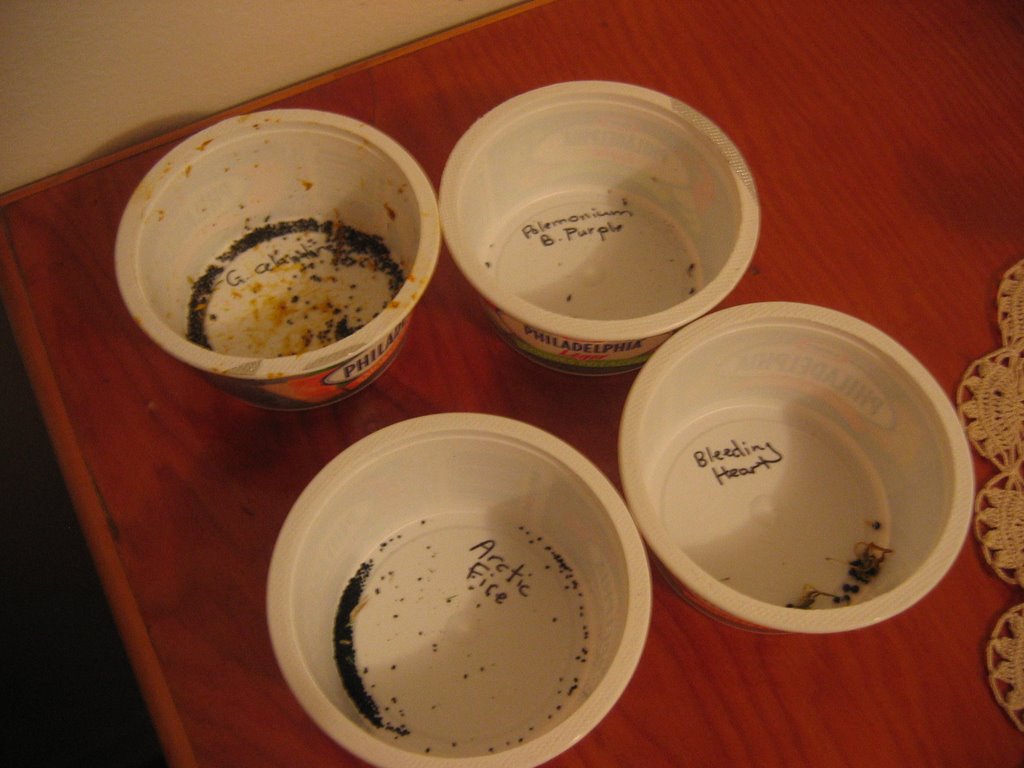Saving seeds
The season is upon us again: harvest time.
For those of us not fortunate enough to have the room and conditions for a vegetable garden, we are talking about a harvest of seeds. Picky people are already thinking, "But seed-harvesting season lasts from spring through to late fall, depending on the plant in question." The picky people are right. But it's on my mind right now, because a number of my perennials are finishing their season of blooming, meaning that I am collecting seeds. For me, it is primarily a form of insurance, seeing as I don't have room for expansion.
So without further ado, here is a quick primer on how to harvest and save seeds. Bear in mind that there are exceptions to pretty well everything I'm going to say here, but these steps will work for the vast majority of seeds.
1. Seed pods are ready to be picked when they are turning brown and looking a little dry. If you wait until they split, you may lose the seeds inside, except for those pods thoughtful enough to open at the top and then wait for you to turn up, like poppies, rose campion and Jacob's ladder. Some nasties, like daturas and impatiens, will split when the pod is still quite green, so it is sometimes necessary to put something over the seed pod, like the foot cut off of a pair of pantyhose, to catch the seeds. This is quite effective, both at catching datura seeds and making your neighbours think you have totally lost it. The sight of a large plant draped in amputated panty hose feet is quite striking in the midst of an ornamental border. The pods on impatiens can be very gently squeezed and if they are ready, they will spring open and eject the seeds, so be prepared to catch them. As a general rule, seeds are ripe enough to harvest if they are turning dark. If they are white or light green and juicy looking, it's not yet time. 2. The harvested seed should be left to dry for a week or two in open containers at room temperature. If they haven't been sufficiently dried, they will tend to go mouldy in storage. Not good. An out-of-the-way place is obviously best. You don't want kids or pets (or let's face it, yourself) to scatter them on you. And do I have to say that identifying the seeds in some way is also a good idea? You can mark it directly on disposable containers, or write it on a piece of masking tape stuck on the side or even just throw in a slip of paper, but do write it down. When you remember the seeds hiding on the top of your bookcase in mid-December, you will not be able to remember which one is which in most cases. Trust me on this one.
2. The harvested seed should be left to dry for a week or two in open containers at room temperature. If they haven't been sufficiently dried, they will tend to go mouldy in storage. Not good. An out-of-the-way place is obviously best. You don't want kids or pets (or let's face it, yourself) to scatter them on you. And do I have to say that identifying the seeds in some way is also a good idea? You can mark it directly on disposable containers, or write it on a piece of masking tape stuck on the side or even just throw in a slip of paper, but do write it down. When you remember the seeds hiding on the top of your bookcase in mid-December, you will not be able to remember which one is which in most cases. Trust me on this one.
3. I then put the dried seeds in homemade envelopes made by folding squares of paper and taping down the sides. Templates for these can be found all over the internet, but really, the shape doesn't matter very much. As long as it works. It's an extremely good idea to identify the seeds on the envelope and a very good idea to note the year they were harvested. Seeds can also be stored in small air-tight containers like film containers, but then you must be VERY sure they are dry enough. My little envelopes then go in a rectangular plastic container with an airtight lid I keep at the back of the fridge. There are very few seeds that require freezing, and considerably more that will be killed by it (tropicals and tender annuals generally), so putting them in the freezer is not recommended as a general rule. Storage in the fridge will keep most seeds viable for a number of years. I am still getting good germination from some seeds that are five and six years old, while other conk out after two or three. Don't use silica gel to keep them dry; it'll suck the life right out of them.
Exceptions to keep in mind: Peas and some other kinds of seeds turn tan or white, not dark. Tree seeds do not do well in dry storage at all, but I'll let you look up storage methods as I don't have any direct experience. Some seeds will keep quite nicely at room temperature for astonishing lengths of time, but these same seeds will generally do well in the fridge too. Some seeds need to be sown fresh, but these are less common plants generally grown by more advanced gardeners.
Technorati tag: Seeds


2 comments:
Thanks for the info. I am going to try collecting some seeds this year.
Hmmm. i have the use of a small bit of an allotment this year i think... interesting...
Mike
Post a Comment